These Baltimore skateboarders spend Sundays at the opera — or at least near it.
The smooth marble steps at the war monument next to the Lyric Opera in Midtown is a perfect place for a blunt slide on their boards.
On a recent August afternoon, a group of skateboarders sling their bags down and take turns at a running start, pushing down on their boards to jump so the surface appears stuck to their soles. Their wheels skirt the ledges as they try to land the perfect ollie, all captured for posterity with a vintage camcorder.
“We’re searching for that feeling, that spot,” said Spencer Brown, a professional skateboarder from Baltimore who has spent many afternoons on these steps. “We grew up watching street videos in the 90s. We love the skatepark, but there’s this feeling ...”
For as long as Brown can remember, Baltimore has been a flyover city when it comes to skateboarding. Those who want to ride here simply haven’t had the infrastructure. Too few skate parks means the sport has survived on the stoops of old rowhouses, in the secrecy of makeshift ramps, and in trips to bigger scenes in Washington, D.C., and Philadelphia.
But the Baltimore scene is changing for the better. Skaters say they are no longer being arrested for taking to the streets, for one. And the city has been convinced to build more skate parks, even though skateboarders would like more.


Baltimore and Baltimore county have four public skate parks each. There are three in Howard County and two in Anne Arundel.
The city’s first public park opened in 2004 and the most recent one at the Inner Harbor welcomed skaters starting in 2021. But since then, skaters worry the momentum for more locations may have stalled.
Brown, a lanky 35-year-old who wears baggy pants and O’s snap-back caps, once commuted across the country for skateboarding and work in California.
“I cared about people knowing about this place,” he said of his home city. “I want them to know about the scene ... and where I come from, and all the stuff that we’ve done here.”
No city parks? No problem
Just north of the city in July, a group of skaters in and around their thirties sipped beers while mixing cement — all in an effort to create a better ride.
They poured and leveled the cement into the cracks of an abandoned basketball court in Parkville to smooth the surface so their wheels don’t get caught in a divot.

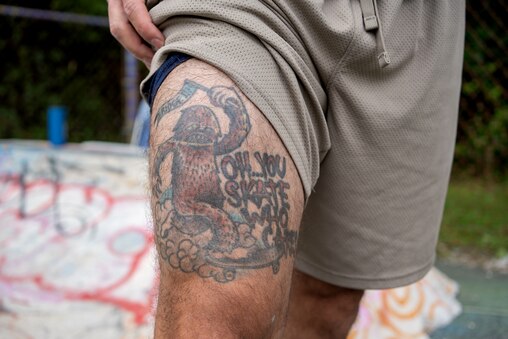

They’ve built ramps out of cinder blocks and concrete to create the unofficial skatepark known as “Crackside.” The secret spot isn’t noticed because of a little luck and its tucked-away location, the skaters say. Parents drop their kids off in the parking lot, and honk when it’s time to go.
Building makeshift skateparks is not new in greater Baltimore. In the early 1990s, Gary Smith, 47, said little official space existed beyond an outdated, bowl-style skating park built in the 1970s in Landsdowne. The privately owned indoor Charm City Skate Park opened 30 years ago near Canton, but charges admission.
Living in Southwest Baltimore’s Franklin Square, Smith said he once turned to street skating, and was beat up by jocks who thought his hobby was lame. His Black friends, he said, hid their boards in car trunks, since it was a “white boy thing.” Smith went to jail for trespassing while skateboarding — twice.
“We were just pothead losers,” said Smith. “We all wore big-ass pants and looked like clowns.”
By the mid-’90s, skating got hip again, the sport’s magazines thick with ads and its national profile rising with the lucrative X Games broadcasts by ESPN. Its patron saint was Tony Hawk, who landed the 900 degree aerial spin in 1999 and launched a wildly successful video game that further popularized the sport.


Despite the popularity, Baltimore still had poor infrastructure. Smith remembers the city’s stumble at its first public outdoor park, which opened in 2004 in Pigtown. Not constructed by a professional skatepark company, it had a rough, broom-finished concrete, which kept many skaters away.
Instead, skaters like Smith flocked to DIY locations, like an old lumberyard in Baltimore County off Belair Road in Nottingham. A man living next door eventually allowed them to wire floodlights for nighttime kick flips and grinds if they promised to clean up the trash.
The yard, with its glass-like skating floor, became known as Ridge. For many, it served as a home away from home, where they’d sleep on boards and pitch tents during summer storms. The dream site, however, was was demolished in 2017.
The Ridge was gone, but just down the street, with the help of friends and cheap rent, Smith opened the Vú Skateboard Shop inside a former antique flea market in 2008.

Smith‘s popular business has survived despite small margins on the skateboards he sells. A summer skate camp he runs and collaborations with bigger brands has kept the business afloat. Many skaters say they got their gear from Smith’s shop, and some have ridden the quarter pipe in the back storage room.
Also paying an ode to skateboarding’s past in Baltimore is a new mural overlooking the Hampden skate park that includes stacks of cinderblocks as a homage to the Ridge.
Building city parks
Baltimore’s two newest skate parks have been welcomed by skateboarders.
The Skatepark of Baltimore in Hampden came about because of the skaters themselves. They had skated on the patch of asphalt behind a recreation center since the 1980s. The city made it an official park in 2014, partly by fundraising from the skating community.
On a recent Tuesday night, wheels can be heard hitting the cement. Some people chat and smoke, but most are focused on the curve of the next ramp.
“Imagine us when we were 16, having all the skate parks, our lives would’ve been shaped so differently,” 29-year-old Yoon Sun Shin said during a break.
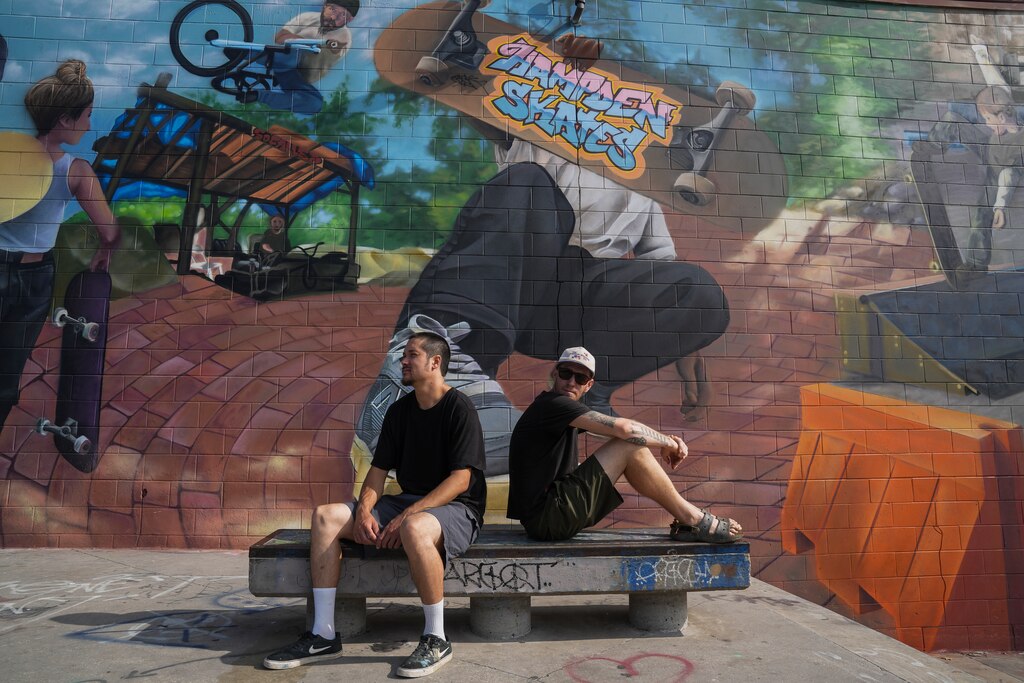

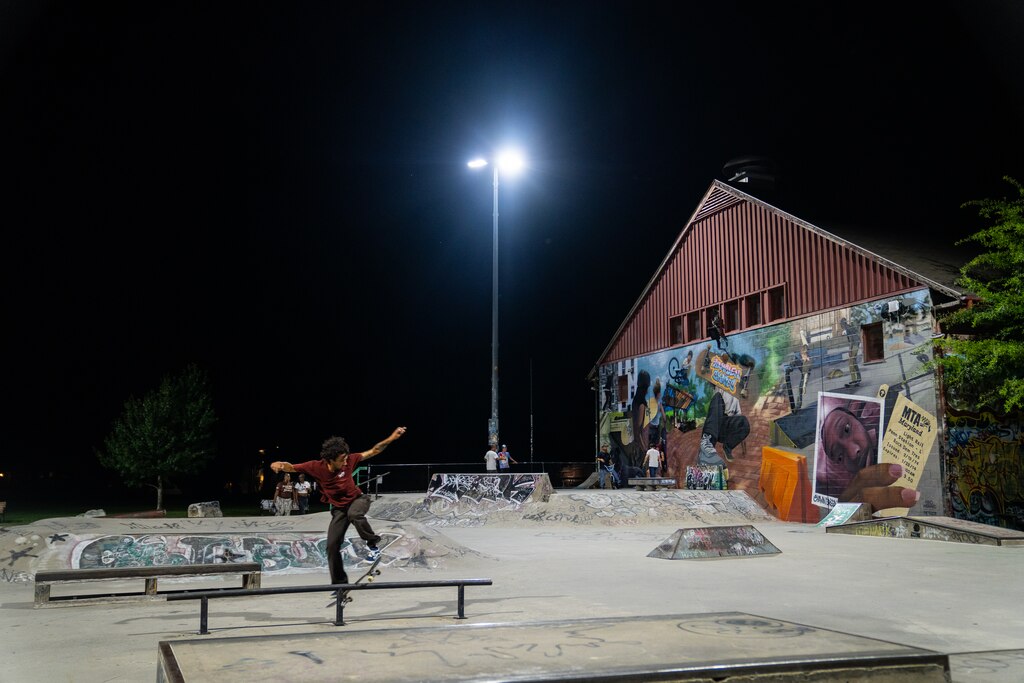
In 2021, another park opened father south near the Inner Harbor, after skaters pushed to include it as part of renovations to a larger park.
Floodlights at this skate park mean the wheels roll long after the sun sets, unlike at other parks.
“This is how I keep out of my head,” said skater Gregory Rochester, 26, who goes by Rell and was at the skate park recently.
Rochester picked up skating two months ago to distract him from other things. He practices every afternoon after a morning of landscaping. The weekend nights get a bit rowdy, Rochester said, because “can’t nobody control a crowd.”
Despite the progress, new skate parks aren’t always easy sells.
In 2022, a plan to build a skate park in Easterwood, a predominantly Black West Baltimore neighborhood, died after local officials said it was not the best option for the area.

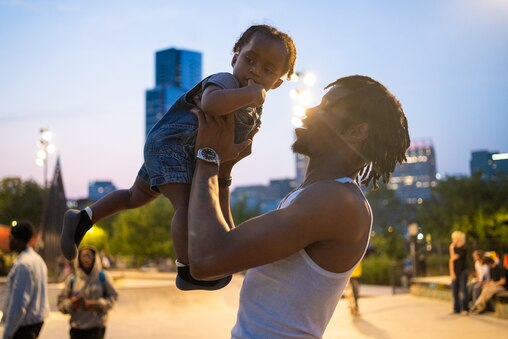


A new skate park is under construction in North Harford Park in Baltimore, though there is no official opening date. The park is near another skating venue in the county, creating a concentration of skate parks.
“North Harford park is great and gonna be huge, but how is a kid from Easterwood going to get there without three buses?” asked Joey Fitzpatrick, a member of the board of the Skatepark of Baltimore. “If we throw everything into the Northeast Corridor, what does that do for kids?”
Reginald Moore, the director of parks and recreation in Baltimore, said in an email that a recreational amenities plan releasing early next year will help guide future decision making when it comes to building skateparks, but noted that “we can’t have every amenity in every neighborhood.”
There are currently no plans for new skate parks, but Moore wrote that the two new parks “are well-loved and well-used.”
At the Inner Harbor park, 19-year-old Bridjaé Taylor, who goes by Star, is resplendent in fishnet stockings with her two-toned Afro and lips painted black. She learned how to skate on the street outside her house, softening her falls on a nearby patch of grass.
She is at the Inner Harbor skate park just about every evening, taking the bus back to her home on the East Side around midnight.
Taylor used to stay inside, wrapped in jackets after a burn injury. But then she said she found skateboarding again — and joined her people by the water.
“In skating, you can’t think about the people looking at you,” she said. “The skate park is for everybody, whether you’re good or not.”
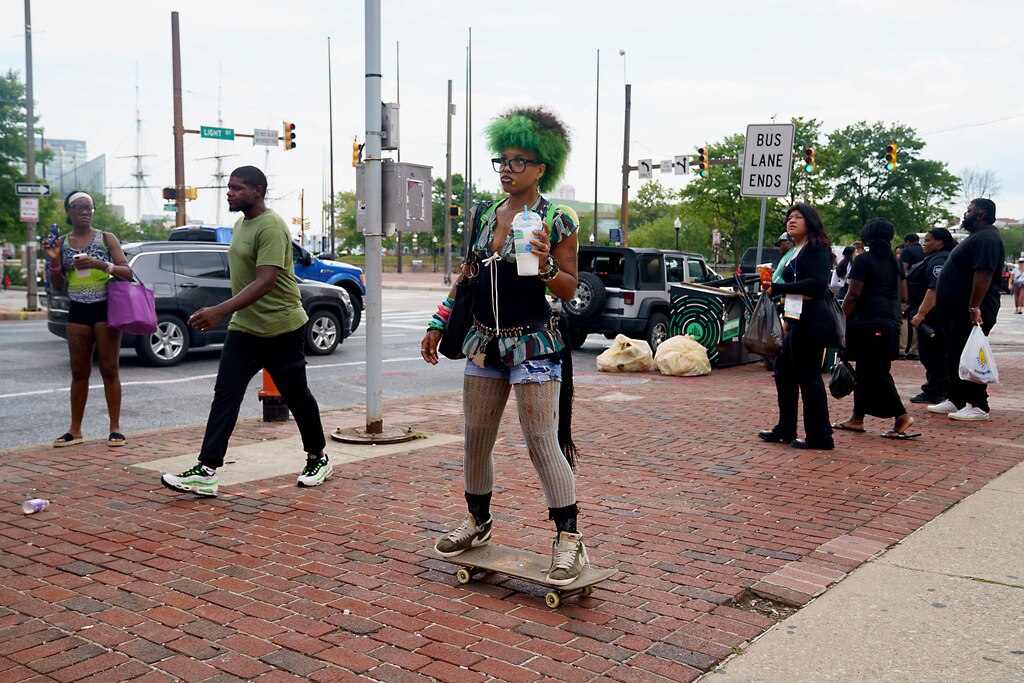



Comments
Welcome to The Banner's subscriber-only commenting community. Please review our community guidelines.